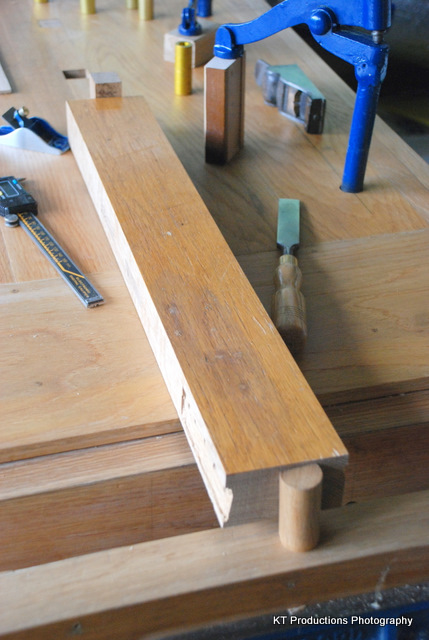Hi guys, pardon the delay and thanks for the inputs but i was away yesterday.
To your question OPJ - and pardon the length. I'm no expert, and up to this have been using a bench i built years ago without thinking very much about it from approx 4 X 12 roofing timbers over DIY welded steel brackets screwed to the floor and wall, then approximately smoothed and varnished. With one metal woodworking face vice at the wrong end.
No dog holes, and the vice was really only useful for short pieces centered between the jaws. It didn't grip well, stuff moved far too easily if you used e.g. a chisel.
It introduced me fairly explicitly to the frustrations of not having a bench that held a workpiece very effectively - compounded by the fact that i only had a small number of sliding F and G clamps. Although to be fair i never seriously set out to maximise its usefulness by drilling dog holes, making bench hooks, relocating the vice and the like.
I got around it by using hand tools very little - doing most of my work on my Robland combination. Trouble is I've meanwhile invested quite heavily in hand tools and other equipment.
The workbench project came about by degrees, as did the replacement of the Robland with Hammer machines. Plan A was to upgrade the current item by facing the top with a maple worktop, but before too long it started to become clear that i was trying to make a silk purse out of a sow's ear, and that for the amount of work involved i'd probably be better to start with a blank sheet.
My lack of experience with a proper workbench, and with hand tools led me to researching workbench designs - and that quickly led to the frustrations mentioned above.
Dogs and vice placement seemed fairly self explanatory once thought about, but i could make little headway on how the various forms of wooden end and face vices are used (other than the basic dog function of the end variety), how they compare to metal vices, on how a larger item like a frame was to be held on a single row of dog holes, how stuff like hold downs are chosen and used, pros and cons of the various solutions etc.
Chris Schwarz's book is very specific and explict on these and lots of other issues - he dissects the problem by rating how well and why `the various designs do on holding various (especially stock sizes of pieces like cabinet doors, timber strip etc) for access to the faces, ends and edges. It gets quite detailed, but at least the facts are there if you are prepared to do the work to plug in your needs. Not only that but he seems to have built and used many benches over the years, and is consequently speaking from practical experience.
I guess the bottom line is that while you can build somebody else's design on trust and hope for the best, that if you want to get it right that you really do need to treat it as a design engineering project. i.e. decide precisely what functions you need, prioritise them and then figure out how best to satisfy the resulting list of requirements.
Good information gets even more important if at the same time you are not that experienced, and as a result are in parallel trying to gain an understanding of the tasks/functions relevant to your situation - both now and in the future.
You're well ahead on experience John, but sounds like we're on the same road. I'll be drawing mine up over Christmas so i can order the timber.
I've just ordered two of this US made modern steel version of the old style crooked holdfasts on the strong recommendation of the book Jim:
http://www.toolsforworkingwood.com/Merc ... y_Code=CGT Those screw down ones you have loo promising - i'd been eyeing up the Veritas screwed version, but they are quite expensive and figured that these were worth a tilt at $17 each - especially since they all use 3/4 in dog holes ...
ian










